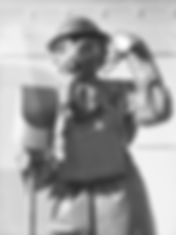
World War 2 - The Home Front
The Home Front - Primarily concerns the activities of a nation's civilians when at war.
During the Second World War as British men and women signed up to serve in the Armed Forces the civilian population found they also had an important role to play in the protection of their homeland from the Nazi threat.
Britain's Home Front is remembered for many things including:
Air Raid Shelters, Gas Masks, ARP Wardens, the Women's Voluntary Service, Rationing, The Black Out, Evacuation, The Blitz, Winston Churchill plus morale boosting films such as 'Went The Day Well?'. Even radio programmes such as 'Workers Playtime', 'Make do and Mend' all had their part to play in firing the stoicism of the population against seemingly overwhelming odds.
Life on the Home Front played an important part of the war effort for all involved and had a positive impact on the outcome of the war. The British Government became involved with a raft of new issues, new policy making, complete reviews and overhauls of the policing, fire and ambulance services, transport, communications, internment of aliens, food production and rationing, manpower allocation, home defence, child evacuation and planning for the frightening possibility of occupation by the enemy.
British men, women and children for the most part endured extreme hardship and distress in one form or another. Few people escaped the rigors of life in wartime Britain and only survived due to their extraordinary spirit, tenacity, determination and courage.
Women were mobilised to an unprecedented degree on the Home Front, fighting the daily battle of rationing, recycling, reusing, and cultivating food
in allotments and gardens. From 1941, women were called up for war work,
as mechanics, engineers, munitions workers, air raid wardens and fire engine drivers.
In order to prevent Britain from being ‘starved out’ more than 80,000
women joined the Women’s Land Army, enduring extremely hard conditions and long hours in isolated rural outposts. Meanwhile back in the cities, the Women’s Voluntary Service prided itself on doing ‘whatever was needed’, mainly providing support to victims of the Blitz and those sheltering from enemy bombing raids in underground stations. Their success in mobilising economic output was also a major factor in supporting combat operations.
In addition, a major new Home Front construction programme for military installations, airfields and roads began in earnest. Requisitioning of county houses and estates, land for training use, billets for members of the Armed Services also had to be taken into consideration and implemented within in a matter of weeks.
The morale and psychology of the people responded well to the leadership and propaganda which was disseminated often though subtle means such as films and radio shows.
The war on the Home Front is estimated to
have cost Britain in excess of £30 Billion
(many hundreds of £billions at todays value).
Great technological advances were made
during the period 1939 to 1945 plus huge
social changes meant that life after the war
would and could never be the same again.
For more information about Britain's Home Front
during WW2, please contact us at: enquiries@homefronthistory.co.uk












All images © Mary Evans Picture Library and Home Front History. All Rights Reserved